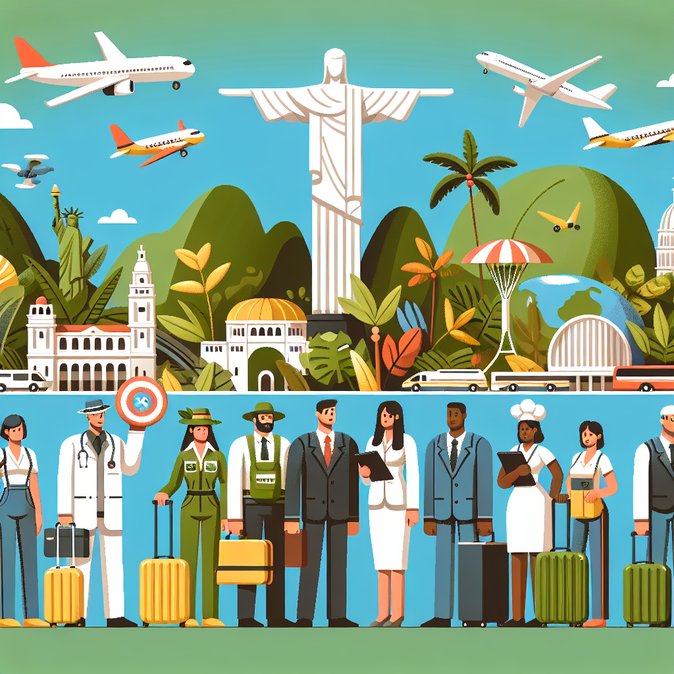
Brazil has welcomed more than 8 million international visitors in the first ten months of 2025, a milestone the country has never before achieved so early in the year, according to a statement by Embratur reported by Travel and Tour World. The figure represents a surge of over 40 percent compared with 2024 and reflects the strongest post-pandemic rebound among major tourism economies in the Americas.
The influx has translated directly into economic-development gains. Between January and October, foreign travelers spent US $6.617 billion, up 10.2 percent year-on-year and equivalent to roughly 8 percent of national GDP derived from tourism. Embratur estimates that more than 114 000 formal jobs were created in the sector during the first half of 2025 alone, with small and medium-sized enterprises benefiting most from visitor spending.
![Brazil Surpasses 8 Million International Visitors in 2025, Setting All-Time Tourism Record]()
Factors behind the boom include aggressive international marketing campaigns, additional long-haul routes launched by LATAM, Azul and Emirates, and the return of mega-events such as COP30 in Belém. Rio de Janeiro—host to record-breaking concert nights at Maracanã Stadium—captured 1.2 million foreign arrivals in the first half of the year, a 52 percent jump on 2024.
For global-mobility planners the numbers matter because leisure demand competes directly with corporate travel for hotel inventory and air-seat supply, especially in Rio, São Paulo and northeastern beach hubs used for company retreats. Travel-policy teams are already revisiting advance-purchase windows and blackout-date strategies to secure preferred rates through Carnival and the 2026 Pan-American Games cycle.
Looking ahead, Embratur projects total arrivals could breach 9 million by year-end, a level that would position Brazil among the world’s ten fastest-growing inbound markets in 2025. Sustainable-tourism guidelines introduced this quarter aim to ensure that growth does not outpace environmental-capacity limits in sensitive areas such as the Amazon and the Pantanal.
The influx has translated directly into economic-development gains. Between January and October, foreign travelers spent US $6.617 billion, up 10.2 percent year-on-year and equivalent to roughly 8 percent of national GDP derived from tourism. Embratur estimates that more than 114 000 formal jobs were created in the sector during the first half of 2025 alone, with small and medium-sized enterprises benefiting most from visitor spending.

Factors behind the boom include aggressive international marketing campaigns, additional long-haul routes launched by LATAM, Azul and Emirates, and the return of mega-events such as COP30 in Belém. Rio de Janeiro—host to record-breaking concert nights at Maracanã Stadium—captured 1.2 million foreign arrivals in the first half of the year, a 52 percent jump on 2024.
For global-mobility planners the numbers matter because leisure demand competes directly with corporate travel for hotel inventory and air-seat supply, especially in Rio, São Paulo and northeastern beach hubs used for company retreats. Travel-policy teams are already revisiting advance-purchase windows and blackout-date strategies to secure preferred rates through Carnival and the 2026 Pan-American Games cycle.
Looking ahead, Embratur projects total arrivals could breach 9 million by year-end, a level that would position Brazil among the world’s ten fastest-growing inbound markets in 2025. Sustainable-tourism guidelines introduced this quarter aim to ensure that growth does not outpace environmental-capacity limits in sensitive areas such as the Amazon and the Pantanal.





